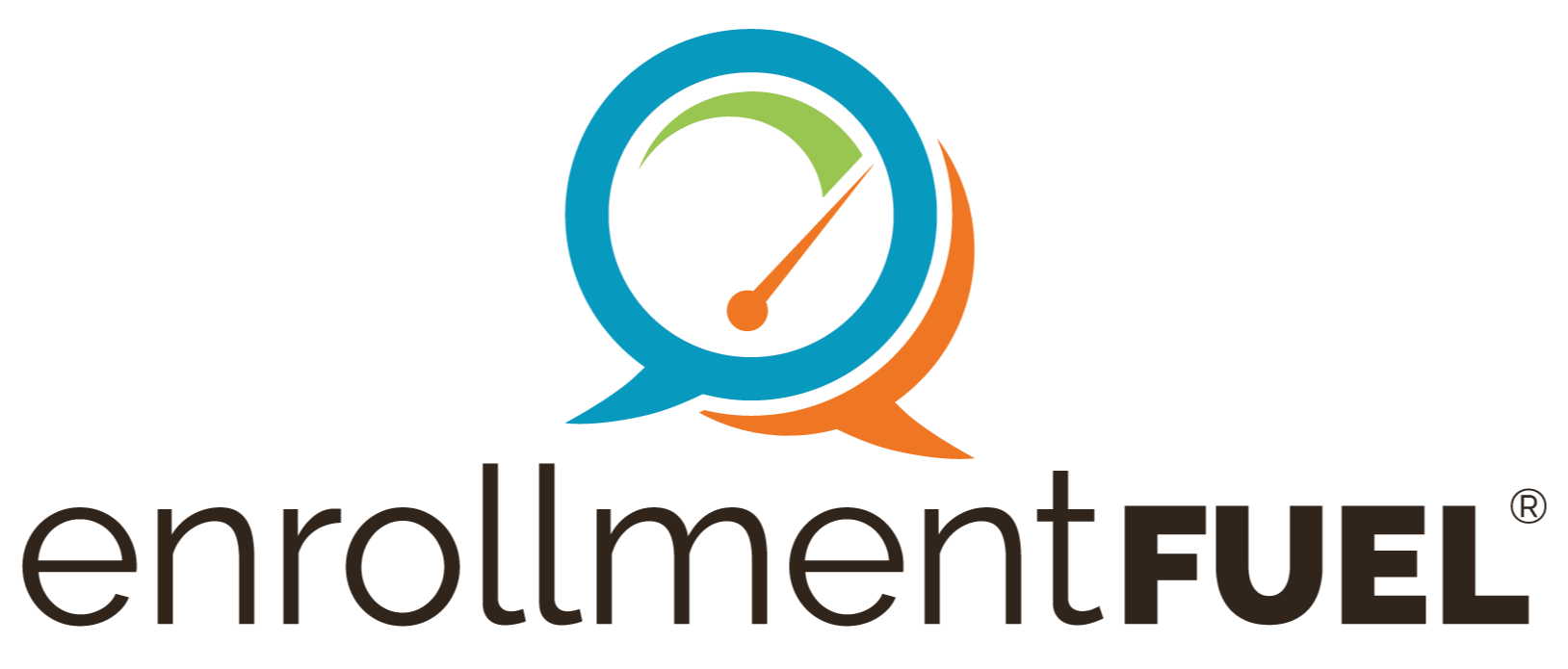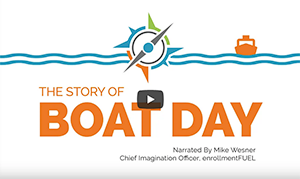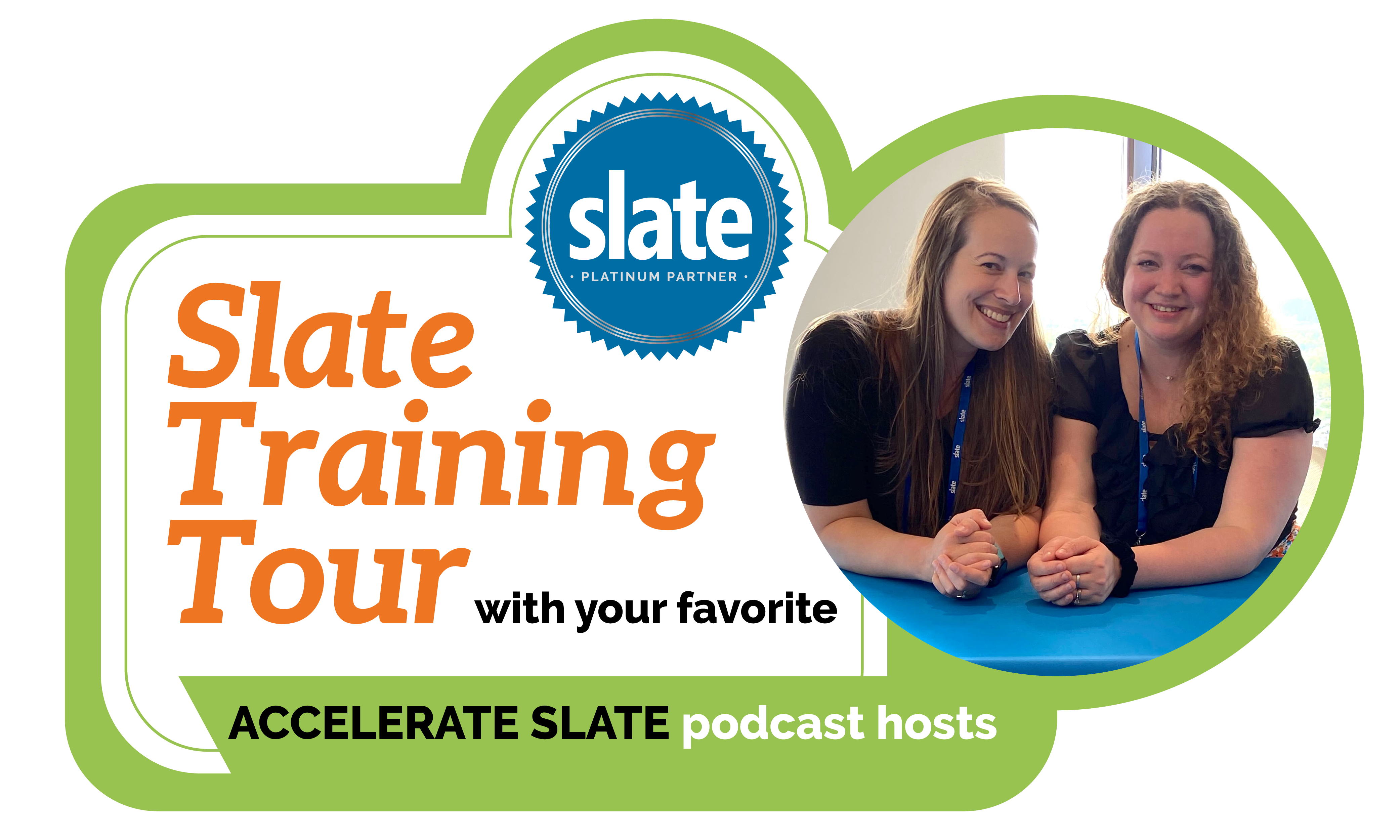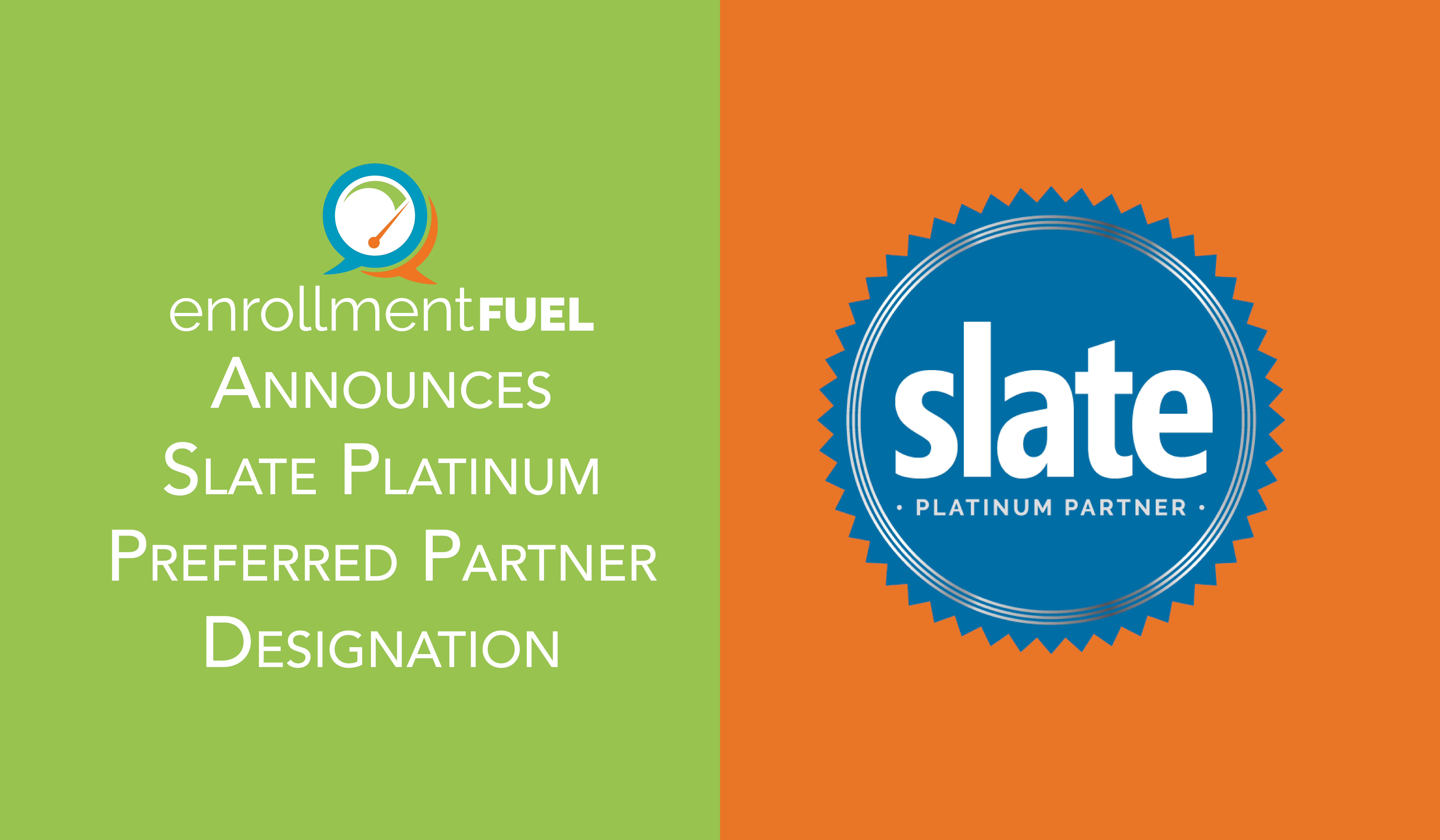To rephrase Mark Twain, the reports of email's death have been greatly exaggerated—for now. It remains one of the most widely used marketing communication tools, especially when we talk about list marketing, which, in higher education, includes both the search strategy many of us employ to build up the top of the enrollment funnel, and any communication flows going to inquiries, applicants, or accepted students.
What You Need to Know About changes to email
In a year when the FAFSA filing deadline has been postponed and many colleges and universities are ramping up their student and parent communication to ensure everyone has the information they need, it is crucial to be aware of any changes happening in the world of email.
In late 2023, Gmail released a number of product changes, which included account management. At the beginning of this year, email providers Gmail and Yahoo—with more expected to follow suit—announced the enforcement of spam and deliverability regulations that are likely to affect email marketing for years to come. As a teaching-learning organization, we wanted to bring you a summary of the above changes and the impact we anticipate them to have on higher education email communications.
Changes and suggested actions
First and foremost, here is a summary of the upcoming changes and the ones that have already happened, along with some suggested actions you can take in response to them:
- December 1, 2023, Gmail changes on account deactivation: On December 1, Gmail began deactivating any account that has been inactive for 2+ years. This move could affect a list-based email campaign's ability to reach its audience if a certain number of the emails included in it have been deactivated. Emailing deactivated accounts will result in a higher percentage of bounce-backs, which, in return, could erode the email domain reputation, preventing emails from reaching active accounts.
- YOUR TAKEAWAY: Your marketing and communications team, as well as CRM managers, should closely monitor bounceback activity for your internal campaigns. We recommend that you promptly remove any bounceback emails from all flows to prevent future communications from going out to them. If you do not, there is a very real possibility that your main .edu domain and any subdomains’ reputations will be affected negatively, resulting in any emails coming out from them going straight to spam.
Announced changes for February 1, 2024 (Gmail and Yahoo) for bulk-mail senders:
- Bulk-mail senders: Gmail and Yahoo have defined bulk-mail sender as “anyone sending the same content to more than one recipient.” Gmail is additionally specifying that they are defining bulk-mail sender as someone sending 5,000 or more emails a day, while Yahoo will not quantify “bulk-mail sender.” Regardless, even someone sending 4,998 emails on Gmail should still closely monitor the email performance and comply with the rest of the changes below.
- SPF, DKIM, and DMARC Required: If the abbreviations look scary, don’t worry, we will explain. These Domain Name System (DNS) records are responsible for ensuring communications coming in and out of your domain are validated and secure. SPF confirms that the sender is verified and trusted through the sending domain; DKIM guarantees the sender is who they are and the contents of the message; and DMARC gives senders the option to define how the sending domain treats any discrepancy between “from” address and “sender” address—it can either delete unaligned emails, quarantine them until further action is taken, or allow them to leave but provide reporting on where the problem occurred. While the existence of all three of these DNS records has previously been required by email providers, this requirement will be strictly enforced beginning February 1.
- YOUR TAKEAWAY: You and your team will need to coordinate with your IT department to ensure that you have SPF and DKIM records in place for all marketing platform(s)/CRM that you use to send emails from your main domain and any subdomains. Additionally, you need to have a DMARC record in place to protect your domain. If you do not already have a DMARC record in place, you will need to create a valid DMARC with the help of your IT department. Once created, you can set the policy to “reporting only” (p=none) to get things started but keep in mind that this does not protect your domain. Gmail and Yahoo recommend that you move your DMARC record to enforcement (p=quarantine and ultimately p=reject) within 30 days. You don’t really need to know what it all means, but we are giving you all this information so you can grab this paragraph and copy/paste it into an email to your IT department and all current partners for confirmation or instruction.
- One-Click List-Unsubscribe Header—RFC 8058: Beginning in February, Gmail and Yahoo will require any bulk-mail sender to include a list-unsubscribe header (formal document title of RFC8058) in their email campaigns. This feature is completely separate from your normal unsubscribe process and does not pertain to it at all. While unsubscribing from an email list typically involves several steps like clicking on the Unsubscribe link, being redirected to a new page, and confirming desired recipient options, the one-click unsubscribe headers simplify the process a great deal. Having the list-unsubscribe header enabled will allow users to more quickly and efficiently opt-out from any campaigns from the top of their email, ideally using this option instead of marking the email as spam, which will hurt the deliverability more.
- YOUR TAKEAWAY: You or your marketing/IT team will need to confirm with your marketing platform(s)/CRM that the list-unsubscribe header is enabled. You might be able to see the unsubscribe option on emails when viewed in Gmail or Yahoo, although that is not always the case. Both providers have a complex algorithm, which takes into account user engagement, sender reputation, and the email content that determines when the option is displayed. In other words, while the option is available and enabled, it might not be visible to recipients. The important thing is that it is enabled to meet the new requirement.
Additionally, you should confirm that you are suppressing anyone who uses the feature to unsubscribe within two days. This is a crucial step—leaving opted-out records in your communications will not only hurt your domain reputation at that point, but it could also endanger the entire email campaign, resulting in students who wish to see the emails not actually receiving them.
Example of what the list-unsubscribe header looks like in Gmail:
- Spam Rate Limit: Arguably the biggest change, beginning in February 2024 Gmail and Yahoo announced that they will now enforce a spam rate limit of 0.3%. That's 3 emails reported as spam per 1,000 sent. Gmail and Yahoo define a “good sender” as having less than 0.1% spam rate, which is less than 1 in 1,000 recipients marking the email as spam. They will issue warnings and begin monitoring the communication if it hits a 0.1% spam rate, but take action if the sender consistently stays at a 0.3% spam rate. At that point, Gmail and Yahoo will stop delivering the mail, and you might see a drop in domain reputation as well. If the spam rate is left unmonitored, this change will likely result in more of your email campaigns being marked as spam, disrupting their deliverability to user's inboxes.
- YOUR TAKEAWAY: This cannot be understated, you will need to closely monitor your communication flows to ensure that reported spam rates do not exceed 0.3%. Anything at 0.1% or above should be reworked, and any opt-outs or contact records who have marked the email as spam should be removed from all communications moving forward. As you finalize your email content, make sure to run the copy, subject line, and preview text included, through spam checks and modify as needed until the spam check is telling you the content passes with flying colors. In other words, take no chances.
While the above are changes that will affect marketing efforts in all industries, we are thinking ahead specifically about the impact they will have on higher education and enrollment management in particular. As always, enrollmentFUEL will continue to provide information to you as it becomes available. Our internal data shows that about half of the emails we process for partner campaigns are Gmail accounts, and another quarter are school emails that are often on a Gmail-based platform. Gmail has become a leader in the space, and any changes it introduces are soon after adopted by other email clients, as evidenced by Yahoo’s participation. Since the changes above are coming on the heels of Apple Mail’s shift in policy in regards to email opens from November of 2022, we anticipate the introduction of more email regulations in the near future as well.
What You Can Do About It All
Changes on this massive scale to one of the most important communications tools at our disposal can be pretty overwhelming. Hopefully, the somewhat intimidating list above has you rallied up and ready to make some positive change. So, we leave you with some final words of wisdom on that front.
- Consider conducting a thorough communication flow and email deliverability audit. You should go over your communication flow on an annual basis, but we recognize how challenging that could be for a team where many members wear many hats. This is why starting with an outside audit that can pinpoint areas for immediate improvement is a good way to gain valuable insight on how to take action until you have the chance to put routine audits in place.
- Find a knowledgeable partner who understands the changes and can advise you and your teams through rebuilding your communication flow accordingly.
- Continue placing significant emphasis on copywriting in order to provide not only content that is unique to your institution, but also running all copy through best-in-industry spam testing services and focusing on the three elements where we can make the most difference to open rates: sender, subject line, and preview text.
- Expand on digital and print channels, favoring them over email campaign elements for any list-based campaigns. Additionally, exploring Forensic Lead Generation™ campaigns that target students who have already shown interest by visiting your website should be on your radar. Employ an omnichannel approach and stray away from over-dependence on email to ensure that your message reaches its intended audiences.
- Continue to monitor new developments and take advantage of opportunities to learn more. Don't miss out on the opportunity to gain valuable insights and strategies for navigating the evolving landscape of email marketing in higher education. Join enrollmentFUEL's REV: FUEL Learning Series Roundtable—Optimizing Your Communication Strategy for the Changing Email Landscape—on February 22, 2024, from 1-2 p.m. ET. Engage in a meaningful discussion about optimizing your communication strategy amidst the recent changes announced by Gmail and Yahoo. enrollmentFUEL's REV Roundtables provides a platform for you to connect with peers, share ideas, and devise effective plans to overcome these and other challenges. Secure your spot by completing the registration form found on the page linked above.
Conclusion
Whatever action steps you choose to take, it is imperative for higher education institutions to adapt and stay ahead of the curve as the landscape of email marketing continues to undergo significant shifts. The impact of the above changes on communication flows, spam regulations, and sender reputation necessitates a proactive approach. Making sure you have taken steps to monitor bounceback activities, implement the necessary DNS records, and embrace the list-unsubscribe header are vital steps to safeguard your email campaigns. Additionally, the enforcement of a spam rate limit strengthens the need for meticulous scrutiny and adjustments to maintain a positive domain reputation.
In the face of these challenges, don’t forget to conduct regular audits, seek expert guidance on further changes and actions, and diversify communication channels as well. Focus on key strategies for success, such as emphasizing unique content, rigorous spam testing, and exploring alternative channels. Taking proactive actions will ensure that your institution's message not only reaches its intended audiences but resonates with them as well in the ever-evolving email landscape.
Related Articles
Slate Launchpad – What I Learned My Second Time Around
After nearly 30 years in enrollment management, I’m going to say it: successful recruitment starts...
Custom In-Person Higher Ed CRM Slate Training | enrollmentFUEL
Dive into your Slate adventure and attend the in-person Slate training sessions led by the hosts of...
Using AI in Higher Ed Content Creation | enrollmentFUEL
Mention the term Artificial Intelligence, commonly referred to as AI, to anyone today, and their...




